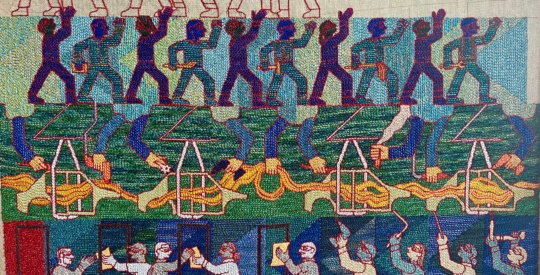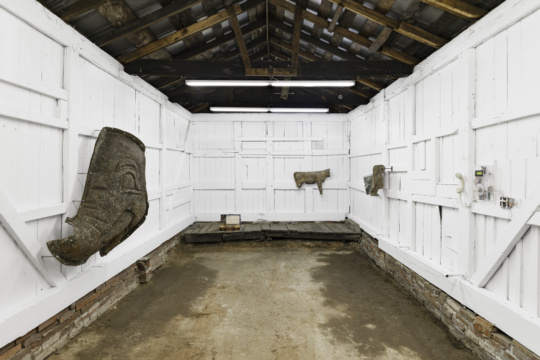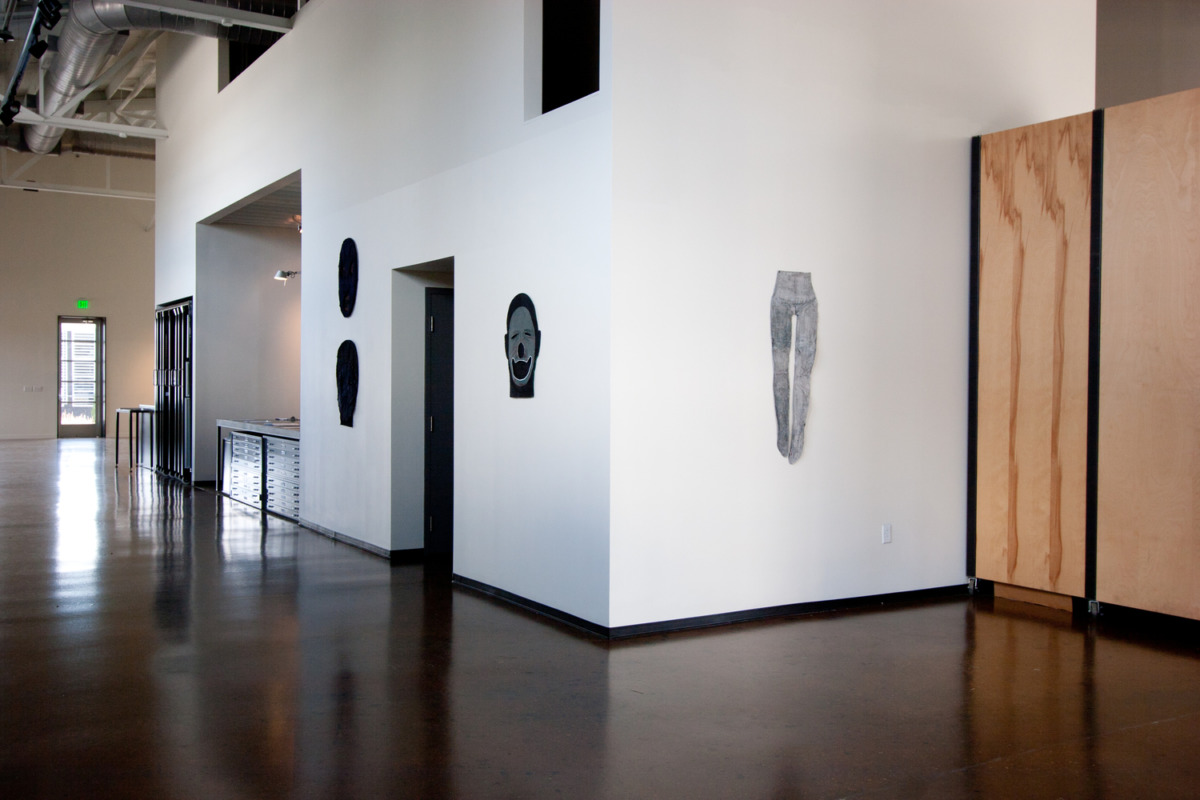
Zeitgeist kicks off 2016 with new work by Alicia Henry. “The Walk” is intense and enigmatic. It’s like a great poem, in that whenever I think I’m pinning down an interpretation, it skitters away from me, taking on a new meaning. Henry, who is chair of Fisk University’s art department, provides little in the way of context for her spectral works, asking viewers to make jarring associations as they navigate this challenging exhibition.
Henry’s textile wall hangings come in a series of forms, many of which are faces, constructed from dyed cotton, leather, felt, linen, and burlap. These are layered and hand-embroidered into figurative cutouts, not unlike paper dolls. But unlike paper dolls, they are posed in grotesque configurations, with missing limbs, empty eye sockets, and mouths agape. Henry contrasts dark indigos, deep reds, and blacks with light yarn and thread, so the embroidery stitched across faces and around mouths reads like sutures and scars. The mix of textures suggests bruises and lesions, making the figures all the more mournful.
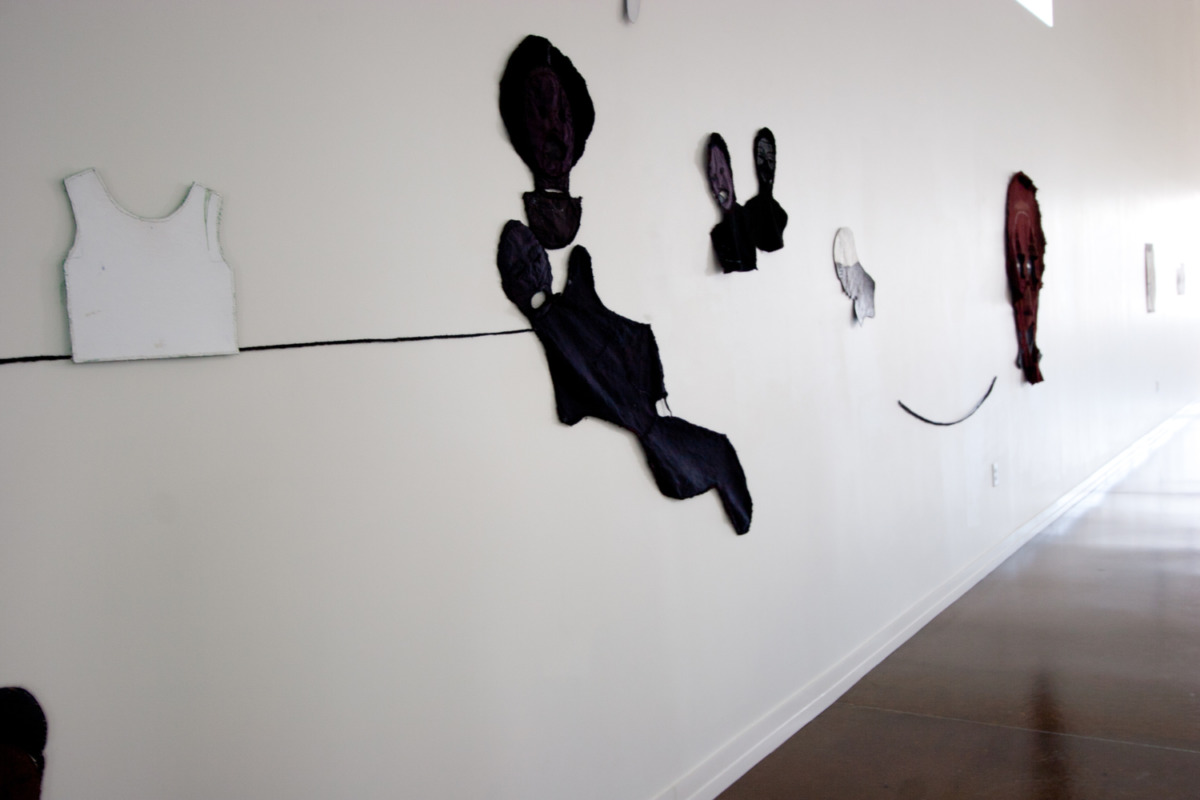
Her ghostly faces have such a living presence that I felt immediately drawn to possible narratives. The first I encountered, Untitled (Large Red Face), is a 48 by 30 inch visage made of maroon burlap and accentuated with white acrylic and embroidered yarn. The eye cutouts hang outward like drooping lower lids, and the flap cut for the mouth hangs like a lolling tongue. The face shows the shock of sudden death that’s been suspended into the afterlife. Or, is it laughing – at me? At its own suffering? It’s hard to say, but the tragicomedy of Henry’s work only adds to its potency.
Large Red Face is connected by a strip of felt to an installation of nine other figures that stretches 35 feet. They range in age and gender, like a family, and I became drawn to the notion that Large Red Face was a sort of matriarch in a long line of kin. Their proximity to one another expresses intimacy and familiarity, just as the distance of others shows withdrawal and isolation. A simple box house, a pair of pants, and an undershirt bring associations of the home and the roles within it. Though many appear vulnerable — children with gaping holes for mouths, a man with his head painfully cocked to one side — some figures and faces of women of color convey a sense of strength and dominance that reminds me of Faith Ringgold’s work.
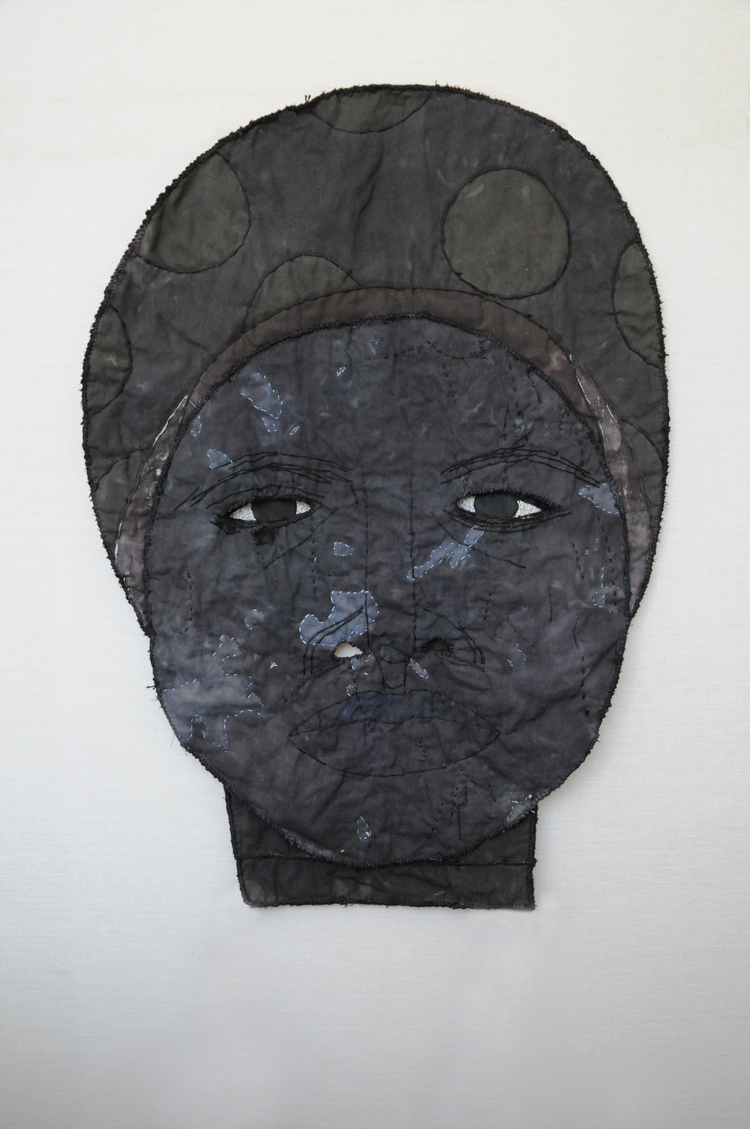
Resembling West African tribal masks, Henry’s work is ceremonial, even totemic. In one large piece that is hung on the gallery’s back wall, a mother and child appear together, and adjacently, a life-size woman with a clownish face wears a long dress that’s detailed with embroidery stitches, revealing her figure underneath like an X-ray. “The Walk” honors rituals of marriage, birth, and death that are central to all families. At the same time, what I find most compelling — and difficult — is when I consider the lived experiences of people of color inherent in the work, our American history of oppression and white supremacy, the ease of willful ignorance and the trauma of understanding. The uncanny silence of the enigmatic figures speaks volumes about dislocation and alienation we enact in our communities.
There’s no easy interpretation for “The Walk.” I’ve spoken with viewers who find the shadowy bodies and faces horrifying, others who find them beautiful, and still others who note power dynamics at work. For me, more than anything, the narrative is one of navigation as the figures cross over to another realm, free of the body, but tied to the feelings of both intimacy and isolation that permeate our lives and instruct our interactions with the world.
Alicia Henry’s “The Walk” at Zeitgeist in Nashville runs through February 27.

